Text
DART All Set To Crash Into Asteroid Dimorphos
youtube
This animation depicts the asteroid moonlet Dimorphos being approached by DART and then crashing with it.
In order to demonstrate a method for diverting potentially deadly space rocks headed for Earth, NASA's Double Asteroid Redirection Test (DART) mission will deliberately crash a spacecraft with an asteroid on Monday.
The Double Asteroid Redirection Test, or DART, will collide with the asteroid moon Dimorphos on September 26 at 7:14 p.m. EDT (23:14 UTC). At 6:00 p.m. EDT, NASA TV will begin airing live coverage.
DART will be transmitting photographs every per second throughout the last hour of the mission when Dimorphos transforms from a point of light to an object that fills the full camera frame.
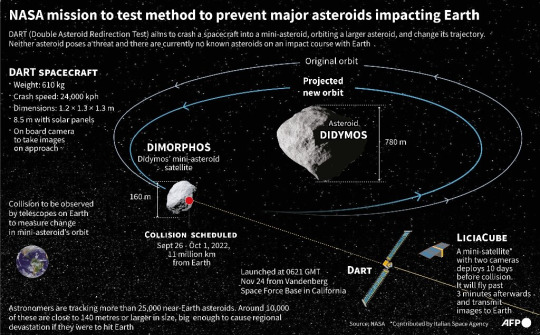
Dimorphos' orbit around Didymos, its bigger parent asteroid, will change as a result of DART's collision. This alteration will be visible to telescopes on Earth, providing proof that the test was successful.
DART's CubeSat will also monitor the impact, and the Hera probe from the European Space Agency will go to Dimorphos in 2026 to examine the crater it left behind.
For billions of years, asteroids have been colliding with Earth. Finally, mankind is responding, starting with DART.
Why is DART crucial?
An asteroid 6 miles (10 kilometers) broad that impacted the Earth 66 million years ago wiped off the dinosaurs and caused a worldwide extinction. Although some evade detection, we believe we have located the majority of asteroids this large, and none are headed directly for Earth.
But it doesn't take anything that big to wreak havoc. An asteroid that is just 50 meters (160 feet) broad has the potential to kill a lot of people under the appropriate circumstances.
Around 20 meters wide, the tiny asteroid that burst in 2013 near Chelyabinsk, Russia, injured 1,500 people and destroyed 7,200 structures in six towns.
Near-Earth asteroids, also known as near-Earth objects, are asteroids that pass by Earth on their orbits (NEOs). If we discover a dangerous NEO on path to strike Earth with enough time to spare, we may be able to gently push it off course.
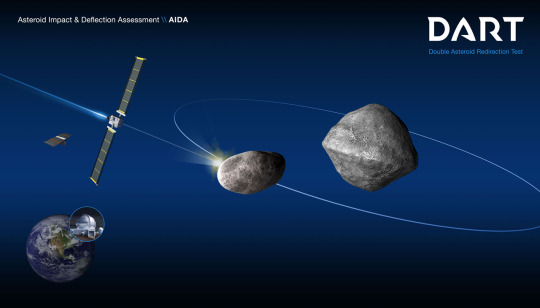
The kinetic impactor method is what is used in this. By crashing with the asteroid Dimorphos, DART will put this strategy to the test and demonstrate how an asteroid's orbit may be changed by a spacecraft.
When will DART have an effect on Dimorphos?
youtube
At 7:14 p.m. EDT on September 26, 2022, DART will affect Dimorphos (23:14 UTC). At 6:00 p.m., NASA TV will begin airing live coverage. The Johns Hopkins Applied Physics Laboratory in Baltimore, Maryland, is in charge of running the mission.
DART's last broadcasts will take 38 seconds to reach Earth at the speed of light. The spacecraft launched on November 21, 2021, and its 10-month voyage will come to an end with the hit.
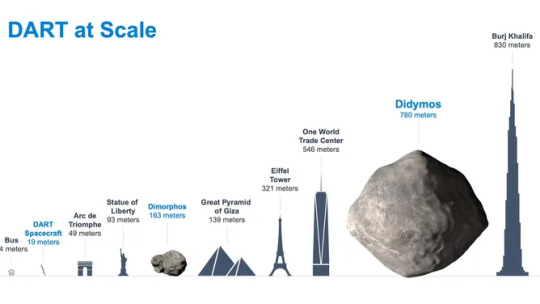
What will the closing minutes of DART entail?
Till the very last hour, and particularly the very last five minutes, we won't see anything.
Didymos and Dimorphos are already visible to DART, although they are still only a single point of light. DART is growing quickly, and Didymos and Dimorphos are both rather tiny cities. DART will approach Dimorphos at a scorching speed of 6.6 kilometres (4 miles) per second, whereas previous asteroid missions like Hayabusa2 at Ryugu and OSIRIS-REx at Bennu have featured leisurely approaches and plenty of beautiful photos.
Didymos is between Ryugu and Bennu in terms of size, being around 780 metres (2,560 feet) wide. Dimorphos, with just 160 metres (525 feet) wide, is smaller than both.
Four hours before to impact, the DRACO telescopic camera on board the spacecraft will begin sending photos to a group of navigational algorithms referred to as SMART Nav. The task of SMART Nav is to locate Dimorphos and manoeuvre the spaceship into collision on its own.
One of those photos will be sent to Earth every second or so. Although DRACO's detector has a resolution of 2560 × 2160 pixels, the pictures are reduced in size so that DART can relay them quickly—to only 512 by 512 pixels.
The DART crew and NASA TV will both see these photographs at the same time. What can we anticipate to see?
With an hour till impact, Dimorphos should finally be visible to DART as a distinct point of light, albeit one that is just a few pixels wide.
Both asteroids should still be visible in the camera frame four minutes before collision. Dimorphos will be roughly 20 pixels wide, whereas Didymos will be about 100 pixels wide.
Two minutes before impact: Dimorphos will be about 45 pixels wide, and it will be obvious that DART is approaching.
Terik Daly, the DRACO deputy instrument scientist, predicted that DART will be able to observe stones and rocks on Dimorphos as large as vending machines 20 seconds before impact. If everything goes as planned, Daly told The Planetary Society, "the last few milliseconds before impact will enable us to observe features on the surface with a pixel size of around ten centimeters (about 4 inches) per pixel."
Dimorphos will be completely vaporized when DART collides with it. Depending on the makeup of Dimorphos, the resultant crater might be as large as 20 meters (66 ft) across. The time it takes for signals to travel at the speed of light to reach Earth is 38 seconds by the time we see DART's broadcasts come to a stop.
How will we know if DART worked?
DART's success will eventually be determined by measurements made using ground-based telescopes.

Didymos and Dimorphos appear to Earth as a single point of light. As the two asteroids pass in front of one another, that point of light changes. This makes it possible to calculate Dimorphos' orbital distance from Didymos.
Dimorphos's orbital period should be shortened by the impact of DART from about 11.9 hours to 11.8 hours, demonstrating the effectiveness of the kinetic impactor method.
The Lowell Discovery Telescope in Arizona, Las Campanas Observatory in Chile, the worldwide network of Las Cumbres Observatory, and the Magdalena Ridge Observatory in New Mexico are just a few of the telescopes that the DART team uses for its studies.
What will the CubeSat for DART do?
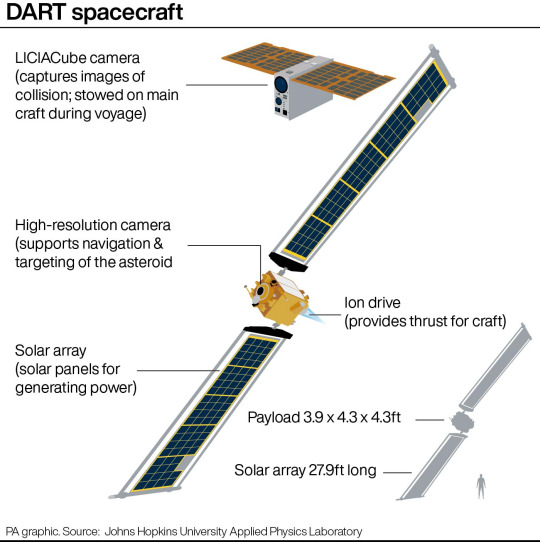
DART will launch a CubeSat called LICIACube, the Light Italian Cubesat for Imaging of Asteroids, about 10 days before impact.
The Italian Space Agency's LICIACube was created with the intention of observing DART's impact, the plume it produces, and maybe the resultant crater. It will use two cameras called LUKE and LEIA to do so from a distance of around 50 kilometers (31 miles).
You shouldn't anticipate LICIACube to send back photographs straight immediately since the CubeSat can only interact with Earth at modest data speeds, which might take months.
How will Hera look into the effects of DART?
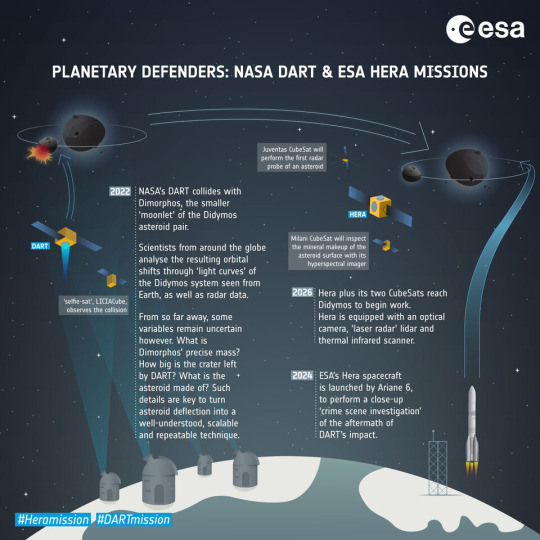
The European Space Agency will deploy a mission dubbed Hera in 2024 in order to thoroughly investigate what took place when DART collided with Dimorphos. Hera will land in 2026 with a collection of tools to explore Didymos and Dimorphos, particularly the impact crater that DART created. The spacecraft is equipped with a laser altimeter to produce 3D maps and an infrared camera to measure the temperatures of asteroids and learn more about their surface characteristics.
Additionally, Hera will launch two of its own CubeSats. Before trying to land on Didymos, Dimorphos, or both asteroids, they will investigate the innards of the asteroids.
What distinguishes DART from Deep Impact?
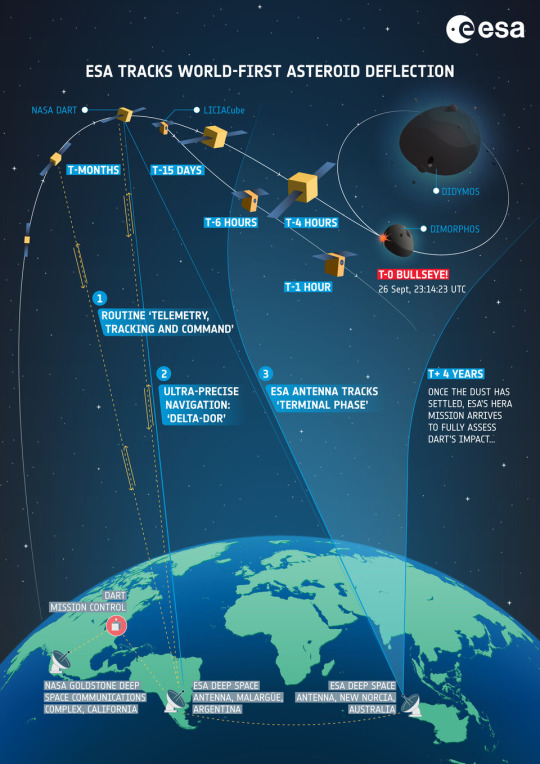
Planetary protection was not the goal of Deep Impact. The spacecraft, which had been launched in January 2005, hit Comet Tempel 1 on July 4, 2005. The comet likely originated from the Oort cloud, a ring of ice debris that surrounds our solar system, since the collision showed it to be around 75% empty space.
Deep Impact was given the new designation Deep Impact (EPOXI) and despatched to Comet Hartley 2 after completing its mission at Tempel 1. Extrasolar Planet Observations (EPOCh) and Deep Impact Extended Investigation make up the double-nested acronym EPOXI (DIXI).
After Hartley 2, NASA planned to deploy Deep Impact (EPOXI) to a third comet, however in August 2013, contact was lost with the probe.
What is the cost of DART?
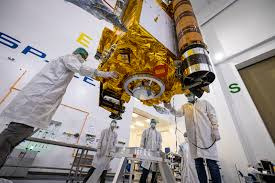
Costing $324.5 million is the DART mission. The spacecraft itself cost $308 million for NASA's planetary defense program, as well as $68.8 million for launch services and $16.5 million for operations and data analysis.
How else might asteroid strikes be avoided?
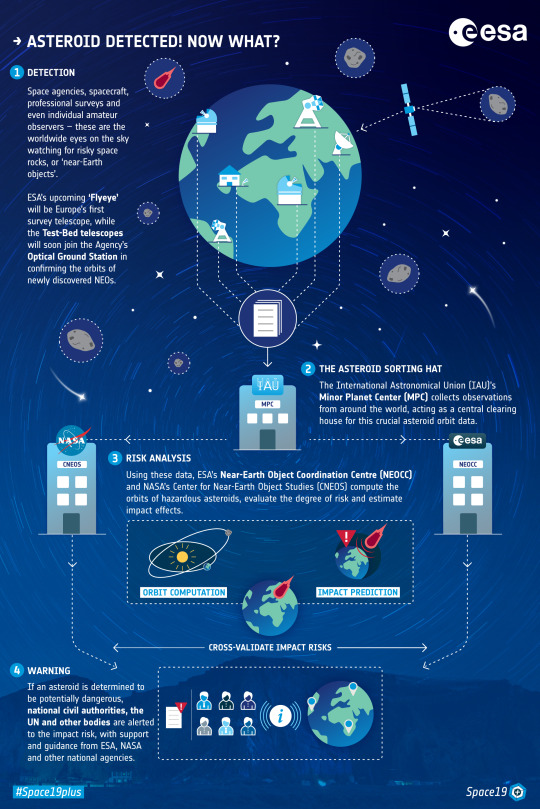
To prevent harmful asteroids from striking the Earth, a considerably bigger jigsaw must be pieced together than DART.
We must first look for nearby things. The fraction of asteroids we've discovered will increase significantly with the launch of the NEO Surveyor mission.
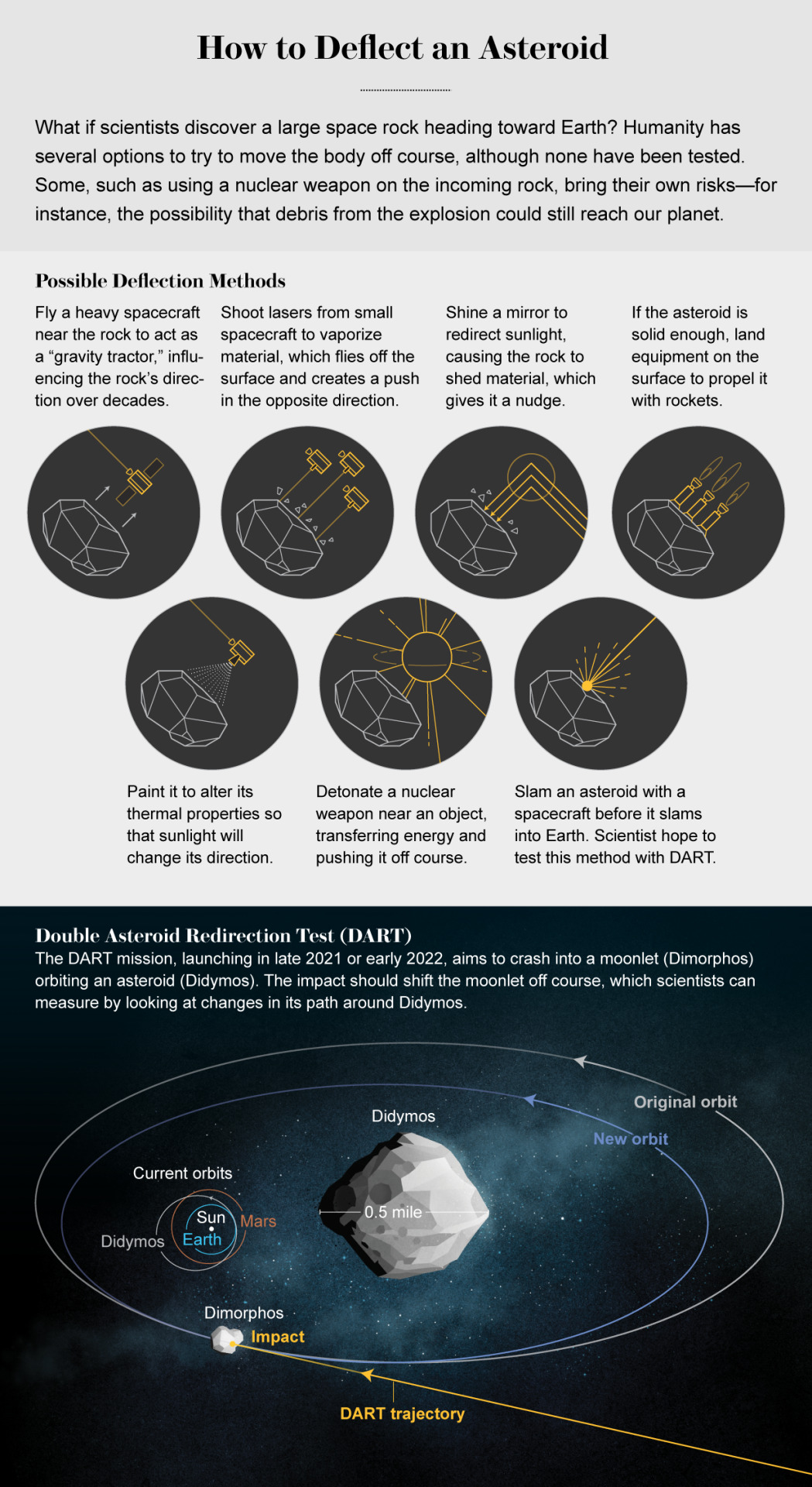
An asteroid must be tracked and studied after discovery.
It is important to support asteroid-hunting astronomers via Grants since the world's professional sky surveys cannot do all of this job on their own.
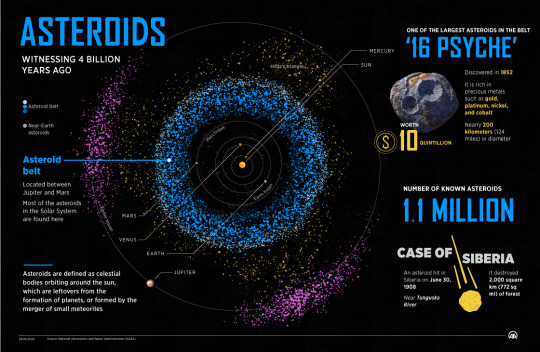
We can significantly lower the likelihood that our planet will be hit by a hazardous space rock by locating, tracking, and describing asteroids, and then testing deflection measures.

~ Jai Krishna Ponnappan
Find Jai on Twitter | LinkedIn | Instagram

#NASA#DART#Double Asteroid Redirection Test#Asteroid#Dimorphos#Asteroid Diversion#NEO#Near Earth Objects#Eart Protection#Space Weather
7 notes
·
View notes
Text
Did You Know, Saturn's rings Were Once a Moon, Torn Apart By Strange Forces.

According to a recent research, Chrysalis, Saturn's former moon, may be able to shed light on some of the planet's secrets.
Saturn's rings probably formed during the last 100 million years, making them relatively recent.
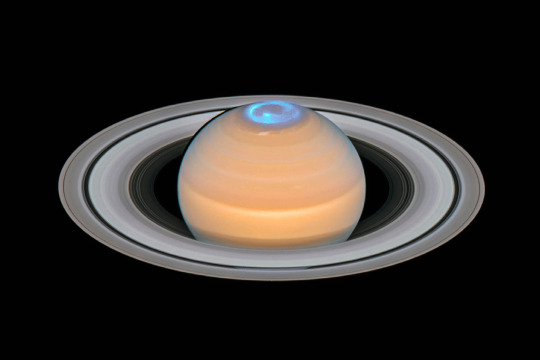
But how they got there has been a persistent mystery.
According to the latest research, Chrysalis was too near to its host planet and was torn apart, which is how it met its terrible end between 100 and 200 million years ago.
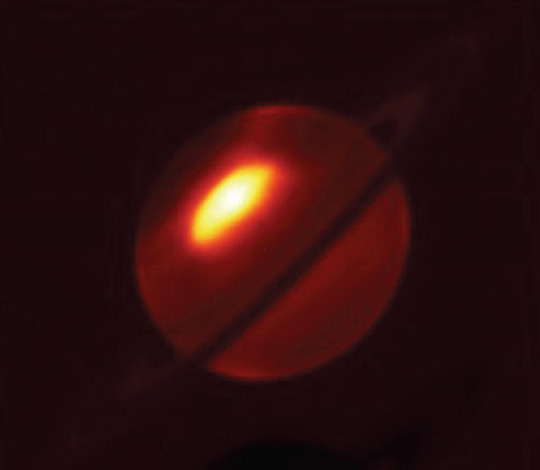
The planet's juvenile rings were formed from the strewn material.
Other scientific puzzles regarding the earth may potentially be solved by the demise of the moon.
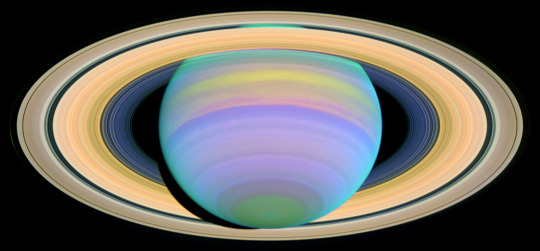
Jack Wisdom, the study's principal author, adds, "It is thrilling to uncover a scenario that explains a variety of things that were not previously considered to be connected.
Image Credit: NASA/JPL/Space Science Institute
~ Jai Krishna Ponnappan
Find Jai on Twitter | LinkedIn | Instagram
#NASA#Planetary Science#Chrysalis#Saturn's Moon#Saturn's rings#space science#space exploration#space research
0 notes
Text
NASA Is Scheduled To Launch Artemis 1 To The Moon On September 27.

Despite a major storm forming in the Caribbean, the space agency is still planning to launch Artemis 1 from Florida's Kennedy Space Center (KSC) on Tuesday, September 27.
The Space Coast may be in its sights as that storm has the potential to become a hurricane.
A Space Launch System (SLS) rocket will launch an unmanned Orion spacecraft on the first mission of NASA's Artemis moon exploration program, Artemis 1, on a voyage to lunar orbit and return.
Technical difficulties, the second of which was a leak of liquid hydrogen fuel at a contact between the SLS and its mobile launch tower, prevented NASA from launching the mission earlier on Aug. 29 and Sept. 3.
According to NASA officials, the leak has been corrected after the mission crew successfully loaded fuel into the Artemis 1 stack on Wednesday (Sept. 21).
Brad McCain, vice president and general manager at Jacobs Space Operations Group, the lead contractor for NASA's Exploration Ground Systems Program at KSC, stated on a call with reporters today, "All in all, it was a terrific day" (Sept. 23).
The crew is prepared to go on, and we have high hopes for our next launch attempt on Tuesday, McCain said.
According to NASA officials, the Artemis 1 team has also obtained the necessary permission from the U.S. Space Force, which regulates rocket launches on the Eastern Range, to extend the certification time for the mission's flight termination system (FTS).
If the SLS deviates from its intended path during launch, the FTS is designed to obliterate it. The system had been approved for use for a period of 25 days, but that certification expired earlier this month.
However, the Space Force has officially given the FTS approval for the Tuesday launch attempt and the fallback date of October 2, according to NASA officials.
The FTS waiver, which Artemis 1 has now gotten twice (the first being an earlier extension from 20 to 25 days), is a significant development. Artemis 1 would have had to roll off Launch Pad 39B back to KSC's Vehicle Assembly Building (VAB), which is the only location the FTS can be recertified, if the Space Force had refused to give it.
However, Artemis 1 could still need to roll back to the VAB to get refuge from an approaching storm.
Tropical Depression 9 is a raging storm that might end up barreling near KSC. It is intensifying in the Caribbean.
At today's briefing, Exploration Ground Systems program manager Mike Bolger said that the launch will proceed as planned on September 27.
If we were to implement Plan B, it would take us a few days to change our tanking test or launch configuration, carry out the rollback, and return to the VAB's protection.
According to Bolger, the mission team is constantly monitoring the weather and will reevaluate its preparations this evening when the most recent weather models are released.
He said, "no later than perhaps tomorrow morning or very early afternoon," a decision regarding whether to stay on the pad or roll back is expected to be made.
According to Bolger, Artemis 1 may remain on the launch pad as long as peak winds don't exceed 74 knots (85 mph, or 137 kph).
And while there is probably some wiggle space in that figure, rollback to the VAB may safely proceed under persistent winds of up to 40 knots (46 mph, or 74 kph).
Mission team members said on today's call that if Artemis 1 rolls back to the VAB in the next days, the team will use the chance to work on the vehicle, such as changing the FTS battery.
The mission would surely miss the launch window on September 27 in that scenario, and it's not clear whether the backup date of October 2 would also be ruled out due to the long rewind procedure. There are also some more issues with the upcoming liftoff.
On launch day, whenever that may be, the weather must be favorable. Additionally, on October 3 the nearby KSC Launch Pad 39A will serve as the launch pad for SpaceX's Crew-5 manned mission for NASA. Just have to wait and see how everything turns out.
~ Jai Krishna Ponnappan
Find Jai on Twitter | LinkedIn | Instagram
#NASA#Artemis 1#artemis 1 launch#Kennedy Space Center#NASA's Artemis program#Space Launch System#SLS#Orion spacecraft#US Space Force
0 notes
Text
Artemis 1 Update - Reoccurrence Of Liquid Hydrogen Leak.

Latest Update: Liquid Hydrogen Flows Again to Core Stage Tank.
Engineers are once again pumping liquid hydrogen to the core stage after warming the location of the liquid hydrogen leak.
A second instance of the liquid hydrogen leak was discovered.
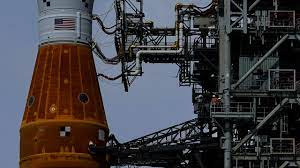
A hollow between the ground and flight side plates of a fast connection in the engine section has once again developed a leak of liquid hydrogen, which has caused the problem to recur.
Additional attempts to troubleshoot are now being discussed by the teams.
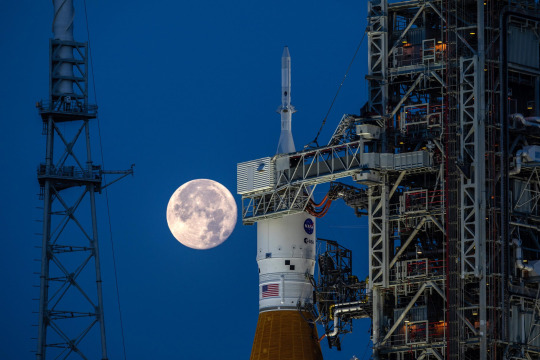
After discovering a leak of liquid hydrogen in a fast disconnect cavity, the engineers halted the flow of the propellant to the core stage so that they may investigate the cause of the problem.
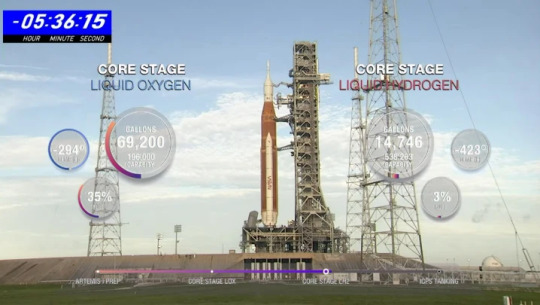
Additional attempts to troubleshoot are now being discussed by the teams.
After discovering a leak of liquid hydrogen in a fast disconnect cavity, the engineers halted the flow of the propellant to the core stage so that they may investigate the cause of the problem.
The launch controllers are now trying to reseat the quick disconnect by heating it up in an effort to create a good seal. Liquid oxygen flow is ongoing.

A problem with a hydrogen leak has prevented NASA from continuing the launch preparations for its Space Launch System (SLS) rocket that was scheduled to take place today, Saturday, September 3.
The problem began during the tanking process, which is when the rocket is loaded with fuel in preparation for the launch. This process is still happening.
There have been numerous issues along the road, including a prior leak of liquid hydrogen that occurred during the several wet dress rehearsals that the rocket went through earlier in the year.
The launch that took place today represents the conclusion of years of effort on the SLS.

The fuel for the rocket is a combination of liquid oxygen and liquid hydrogen, and in order for the rocket to function properly, these liquids have to be fed into it via a line.
The flow of liquid oxygen also needed to be mediated while the leak of liquid hydrogen was being addressed in order to maintain the correct ratio of liquid oxygen to liquid hydrogen, which is required for proper operation.
On September 3, shortly before 7:30 a.m. Eastern Time, a cavity for a fast disconnect began leaking hydrogen, which led to the release of liquid hydrogen.
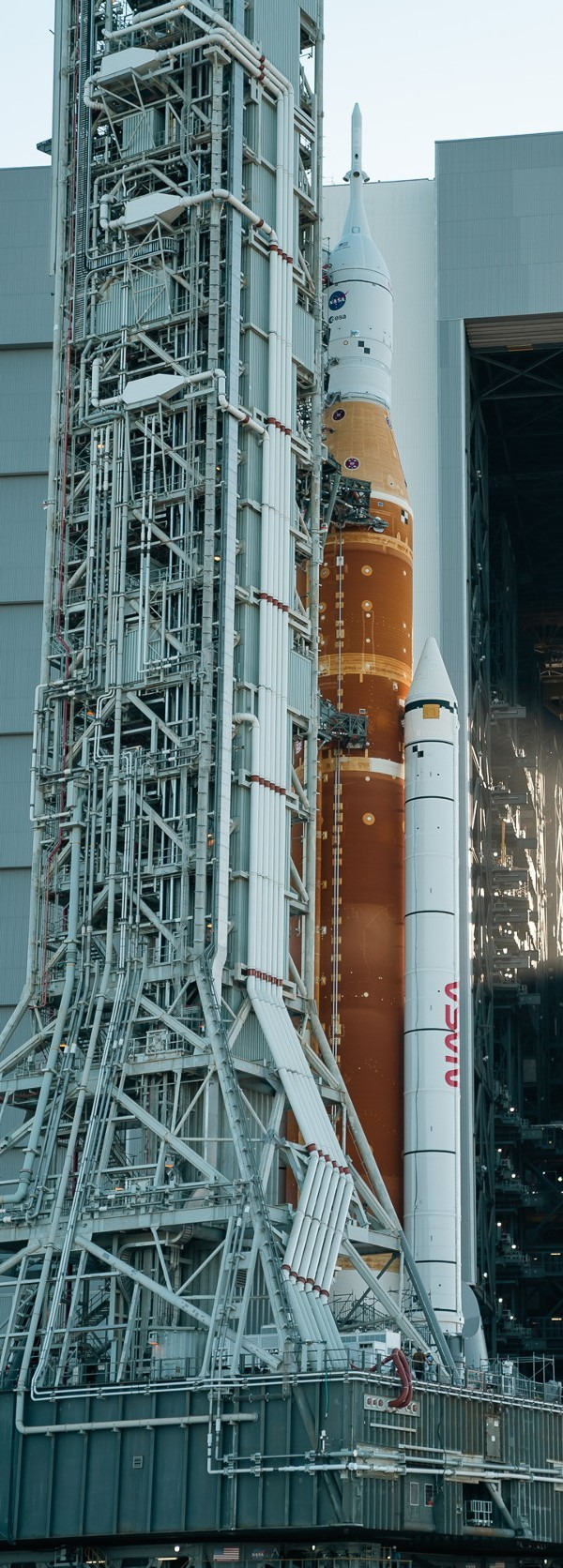
The flow of hydrogen was stopped so that engineers could work on the quick disconnect to get it to seal properly, an operation that took around half an hour to complete.
During this time, the quick disconnect was disconnected from its supply.
After eight in the morning Eastern Time, the problem seemed to have been fixed, and the flow of liquid hydrogen resumed.
After warming up a quick disconnect in the engine section where a hydrogen leak was detected in the cavity between the ground and flight side plates of the quick disconnect, "launch controllers have resumed flow of liquid hydrogen to the core stage," NASA wrote in an update.
"Launch controllers have resumed flow of liquid hydrogen to the core stage." The fast disconnect was warmed up by the teams in an effort to reseat it and create an adequate seal.
The issue, however, reemerged once the flow of propellant was restarted, and the pressure was brought back up to its previous level.
Once the tanks of liquid oxygen had reached 56% of their capacity and the tank of liquid hydrogen had reached 8% of its capacity, the connection to the rocket core stage began to leak again.
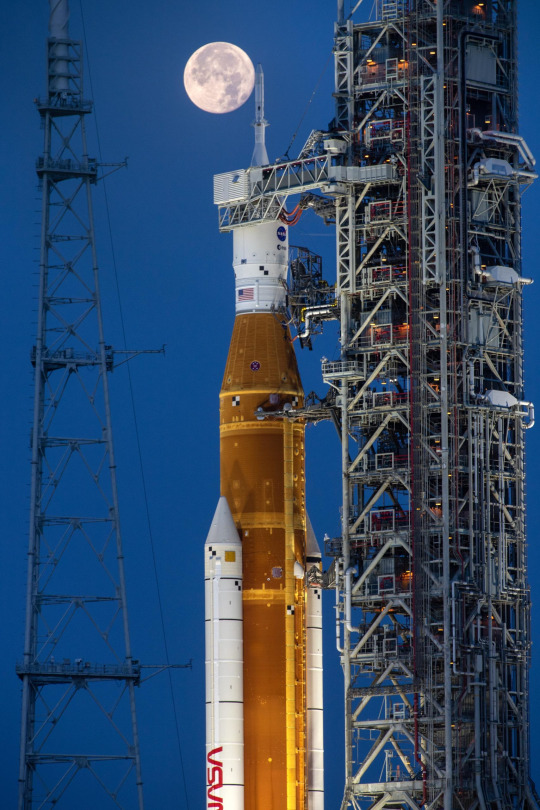
In the next step, engineers will reportedly try to reseat the quick disconnect by using helium to increase the pressure in the line.
This information comes from NASA TV.
Courtesy: nasa.gov
~ Jai Krishna Ponnappan
Find Jai on Twitter | LinkedIn | Instagram
You may also want to read more about Space Exploration, Space Missions and Systems here.
#NASA#Artemis 1#Moon Mission#Artemis 1 countdown#Artemis 1 Hydrogen leak#Artemis 1 launch#Artemis 1 launch date and time#Artemis 1 mission details#Artemis 1 mission#space exploration#manned space mission#Artemis
1 note
·
View note
Text
USA Plans To Re-Classify UFOs
Unidentified flying objects (UFOs), also known as unexplained arial phenomena (UAPs), will be split into two categories:
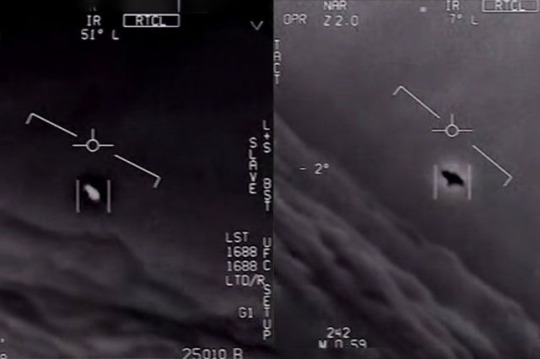
Those that are thought to be created by humans
And those that aren't, according to a new congressional paper.
By changing their definition to "unidentified aerospace-undersea phenomena," it also broadens the definition of UFOs, which are no longer merely flying objects.

Congressional Report Detailing the U.S. Government Examination Into UFOs That Aren't "Man-Made" Additionally, it broadens the definition of a UFO.
A recent congressional study modifies how we categorize UFOs—whether they are man-made or not—and redefines them as "unidentified aerospace-undersea phenomena."

The linguistic evolution around defense in many fields is reflected in the modifications.
Though the study allows room for interpretation, it is clear that the administration sees China and Russia as the actual dangers.
Unidentified flying objects (UFOs), also known as unexplained aerial phenomena (UAPs), will be split into two categories: those that are thought to be created by humans and those that aren't, according to a new Congressional paper.

By changing their definition to "unidentified aerospace-undersea phenomena," it also broadens the definition of UFOs, which are no longer merely flying objects.
For the fiscal year 2023, the document serves as an addition to the Intelligence Authorization Act.
Exactly what is it in the sky? It seems to be headed for a new U.S. intelligence inbox if it's not a bird, an aircraft, or some man-made item.

Congress asserted two shocking statements:
First, "cross-domain transmedium risks to the national security of the United States are growing rapidly."
Second, it seeks to differentiate between UFOs with human origins and those without: The paper indicates that items that are temporarily not ascribed or those that are conclusively determined to be man-made following analysis will be sent to the proper offices and should not be regarded as unexplained aerospace-undersea phenomena.
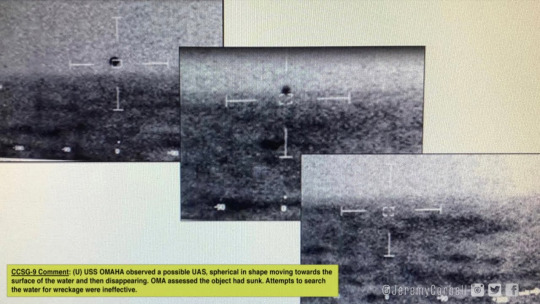
The Pentagon recently coined the name "transmedium" for its UFO group, which has spread to other agencies, and it appears often in the congressional report.
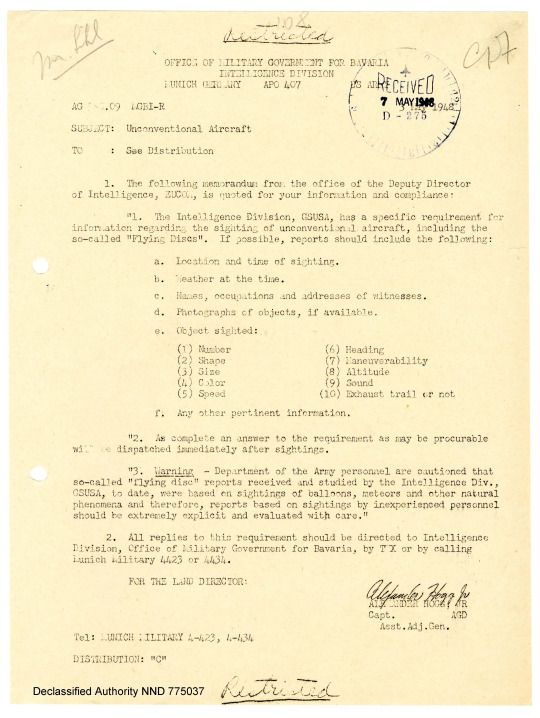
Literally speaking, space, air, and water are all media in this context and allude to technology that would be able to move across them.
Launchers used in NASA's moon landing mission would theoretically be considered transmedium since they fly through the atmosphere of Earth before entering space.
However, that particular illustration demonstrates why transmedium technology is so… foreign. We've just begun to scratch the surface of how to go through the atmosphere most effectively, then adapt and move across space.
On Earth, amphibious vehicles typically transition from a motorized land vehicle to a motorized surface vessel—not from an aerial aircraft to a submarine. Flagships avoid having to leave orbit and enter planetary atmospheres even in Star Trek.
The Pentagon refers to it as "all-domain," which is another intriguing word. The term "domain" is used in defense to refer to the battlefield or, in the modern era, the "battle space."
You would have seen studies of regions in Europe, such as mountains or coastlines, and those in Asia, such as rainforests or crowded urban areas, throughout WWII.
Then there were domains for many additional media, such air warfare and naval (surface and submarine) warfare.
Many international battles nowadays aren't even recognized as wars, much alone waged in these conventional methods along well-established lines.
Cyberattacks and other technology-based strategic advantages are increasingly included in domains; consider Russian cybercrime or Facebook bots.
And the United States Space Force has shown that our defensive capabilities are expanding to new heights.
This background clarifies the point being made in the most recent Intelligence Authorization Act supplemental report.
Before you know it, "cross-domain transmedium dangers" sounds like big talk about American concerns of China and Russia.
The U.S. Army's Multi-Domain Task Force (MDTF) paperwork makes this clear, for instance, by stating that Congress is concerned about the danger that Russia and China represent to U.S. national security. The Army claims that it has to be able to function in a multi-domain environment in order to counter the threat.

The recent name of the Pentagon's UFO organization also hints in that direction. The office is currently known as the All-Domain Anomaly Resolution Office; it was formerly known as the Airborne Object Identification and Management Group.
Although you may make the case that these changes correspond with a rise in interest in UFOs, the wording doesn't necessarily imply such. It's merely the most recent acknowledgment of the fact that threats to the United States do not just come from "airborne objects," whether they originate in space or not.
The committee would now categories suspected UFOs into two groups: those that can be positively identified as "man-made" and those that cannot.
Although the terminology may be novel or even sexually explicit, the government has been openly recognizing many alleged UFOs as man-made objects, such as weather balloons, for more than 70 years.
This portion of the report simply states that the UFO office's inbox for objects that have been recognized as being created by humans will be moved to someone else's.
All of this suggests that the news about UFOs may not be as surprising as it first seems.
The definitions "must be amended to encompass space and submarine, and the scope of the Office should be inclusive of those new domains with an emphasis on tackling technological surprise and 'unknown unknowns'," which is an intriguing sign that these offices are all coming up with the times.
Technology surprises in this context relate to abrupt developments in applied science or technology or the unexpected application of a well-known technology. Unknown unknowns are exactly what they sound like—aspects of the situation that the government is still unaware of.
The study does allow some room for interpretation, but in a sense, China and Russia just exercising their technical and geopolitical might is scarier than the dangers portrayed by bogeymen from space.
~ Jai Krishna Ponnappan
Find Jai on Twitter | LinkedIn | Instagram
#UFO#Unidentified Flying Objects#unidentified aerospace-undersea phenomena#unexplained aerial phenomena#UAP#Intelligence Authorization Act#United States national security#transmedium#NASA#Amphibious vehicles#cross-domain#submarine#Multi-Domain Task Force#Space Force
0 notes
Text
Carbo Dioxide Discovered On Exoplanet By Webb Telescope
Carbon dioxide was found on an extraterrestrial world by the James Webb Space Telescope!
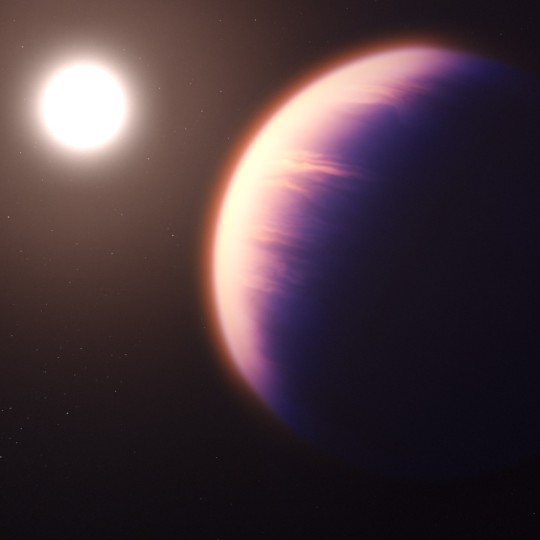
Image credit: NASA, ESA, CSA, and STScI/J. Olmsted
The first definitive proof that carbon dioxide exists in the atmosphere of a planet outside of the solar system was obtained by our James Webb Space Telescope.
The puffy planet, a gas giant 700 light-years from Earth circling a Sun-like star, sheds light on the planet's composition and development.
Based on what is known about the planet right now, this graphic depicts what the exoplanet WASP-39 b would look like.
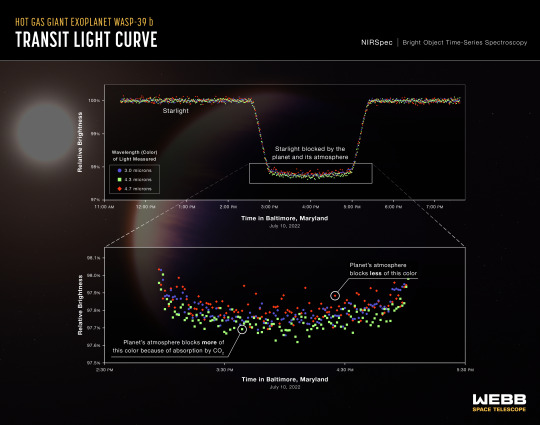
As the planet passed in front of the star on July 10, 2022, three distinct wavelengths (or colors) of light from the WASP-39 star system changed in brightness over time, as shown in a sequence of light curves from Webb's Near-Infrared Spectrograph (NIRSpec).
Credits: NASA, ESA, CSA, and L. Hustak are represented in the image; the JWST Transiting Exoplanet Community Early Release Science Team is represented in the science.
The atmosphere of a planet outside of our solar system contains the first conclusive evidence of carbon dioxide in its atmosphere, according to NASA's James Webb Space Telescope.
This observation of a gas giant planet 700 light-years from Earth circling a Sun-like star sheds light on the planet's composition and development.
The discovery, which has been approved for publication in Nature, provides proof that Webb could one day be able to identify and analyze carbon dioxide in the thinner atmospheres of smaller rocky planets.
With a diameter 1.3 times larger than Jupiter and a mass around one-quarter that of Jupiter, WASP-39 b is a hot gas giant.
Its high temperature contributes to some of its excessive puffiness (about 1,600 degrees Fahrenheit or 900 degrees Celsius).
WASP-39 b circles its star extremely closely, just approximately one-eighth the distance between the Sun and Mercury, and completes one round in little over four Earth days, in contrast to the colder, more compact gas giants in our solar system.
A planet transits its host star, or passes in front of it, causing a modest, periodic dimming of the star's brightness that led to the planet's discovery, which was announced in 2011.
The planet's atmosphere contains water vapour, sodium, and potassium, according to earlier studies from observatories like NASA's Hubble and Spitzer satellite telescopes. Carbon dioxide has now been verified to exist on this planet because to Webb's unrivalled infrared sensitivity. filtering the starlight. Researchers may take advantage of transiting planets like WASP-39 b, whose orbits we witness edge-on rather than from above, to study planetary atmospheres.
Some of the starlight is partially covered by the planet during a transit (resulting in the overall darkening), and some is transmitted through the atmosphere of the planet.
On July 10, 2022, Webb's Near-Infrared Spectrograph (NIRSpec) observed the transmission spectra of the hot gas giant exoplanet WASP-39 b and obtained the first definitive proof of carbon dioxide on an extrasolar planet.
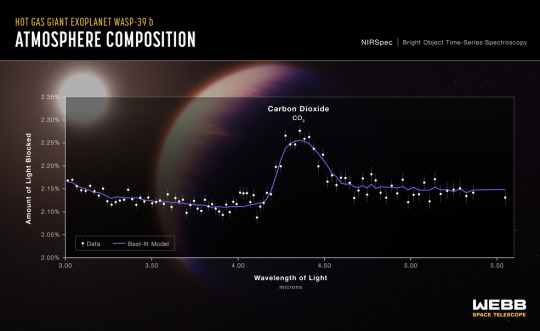
Additionally, this is the first comprehensive exoplanet transmission spectrum yet recorded, spanning wavelengths from 3 to 5.5 microns.
Researchers can identify the precise composition of an atmosphere by analyzing minute variations in brightness of the transmitted light over a variety of wavelengths because various gases absorb distinct combinations of colors.
WASP-39 b is a good target for transmission spectroscopy because of its inflated atmosphere and regular transits.
The first conclusive carbon dioxide detection. For their observations of WASP-39b, the study team employed Webb's Near-Infrared Spectrograph (NIRSpec). The first definitive, in-depth proof of carbon dioxide ever found on an extrasolar planet is shown by a little hill between 4.1 and 4.6 microns in the resultant spectrum of the exoplanet's atmosphere.
"Zafar Rustamkulov, a doctoral student at Johns Hopkins University and a member of the JWST Transiting Exoplanet Community Early Release Science team, who carried out this analysis, stated, "As soon as the data arrived on my screen, the huge carbon dioxide feature grabbed me. Crossing a crucial milestone in the study of exoplanets was a remarkable event.
No observatory has previously recorded such minute variations in brightness of so many different colors in an exoplanet transmission spectrum between the wavelengths of 3 and 5.5 microns.
For determining the abundances of gases like water and methane as well as carbon dioxide, which are believed to exist in a variety of exoplanet types, access to this section of the spectrum is essential.
Leading the research is Natalie Batalha of the University of California at Santa Cruz. "Detecting such a clear signal of carbon dioxide on WASP-39 b bodes well for the identification of atmospheres on smaller, terrestrial-sized planets," she stated.
It is crucial to comprehend a planet's atmosphere because it contains information about the planet's formation and evolution.
According to Mike Line of Arizona State University, another part of the study team, "Carbon dioxide molecules are sensitive tracers of the tale of planet creation."
We can tell how much solid and how much gaseous material was utilized to construct this gas giant planet by studying this carbon dioxide characteristic. JWST will do this measurement for a number of planets over the next ten years, shedding light on the specifics of planet formation and the peculiarities of our own solar system.
This NIRSpec prism observation of WASP-39 b is just a small portion of a broader inquiry that also includes observations of two additional transiting planets and studies of the planet utilising other Webb equipment.
The inquiry, which is a component of the Early Release Science initiative, was created with the goal of giving the Webb data to the exoplanet research community as soon as feasible.
According to co-investigator Vivien Parmentier from Oxford University, "the objective is to assess the Early Release Research findings fast and build open-source tools for the science community to utilize."
This allows for contributions from all across the globe and guarantees that the next decades of observations will provide the greatest research possible.
The paper's co-author from NASA's Ames Research Center, Natasha Batalha, adds, "Our Early Release Science effort is based on NASA's open science guiding principles, promoting an inclusive, transparent, and collaborative scientific process."
~ Jai Krishna Ponnappan
Find Jai on Twitter | LinkedIn | Instagram
Further Reading:
NASA’s Webb Detects Carbon Dioxide in Exoplanet Atmosphere
#Exoplanet#JWST#nasa james webb space telescope#astronomy#planets#life#alien life#space exploration#deep space#WASP-39#exoplanet wasp-39
4 notes
·
View notes
Text
NASA - Every sunset heralds the approach of a brand-new day.
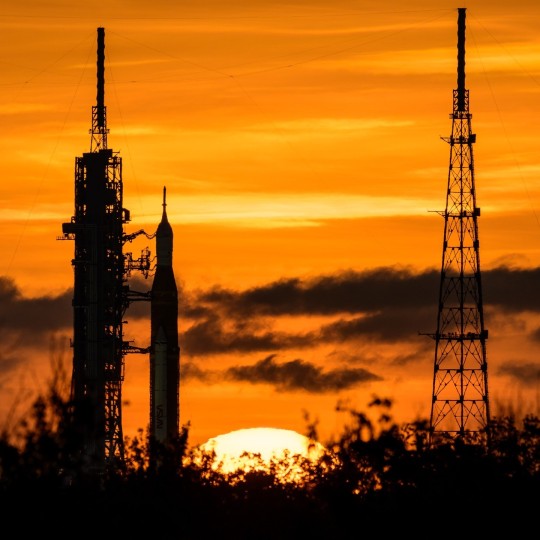
The Space Launch System (SLS) rocket and Orion spacecraft are being prepared for a new launch date, which is slated for no earlier than Saturday, September 3.
Teams have evaluated the data from Monday's launch attempt.
A crucial milestone in our return to the Moon and a stepping stone to Mars, the #Artemis I mission heralds a new era in human space exploration.
The SLS and supporting infrastructure at Kennedy Space Center's launchpad 39B appear black as the Sun emerges over the horizon. The clouds are pale orange and black with a bright orange sky.
~ Jai Krishna Ponnappan
Find Jai on Twitter | LinkedIn | Instagram
0 notes
Text
Artemis 1 - Moon Mission

Artemis 1 Moon Mission UPDATE:
The 29 August launch has been cancelled. A fresh launch attempt is being confirmed as we await information.
At the iconic Launchpad 39B at the Kennedy Space Center in Florida, the United States, the Orion spacecraft with an integrated European Service Module is perched atop the Space Launch System.
The trio has been approved for launch by the Flight Readiness Review, ushering in a new era in space exploration.
The launch of Artemis I, the first of many missions that will bring people back to the Moon and bring the first European aboard, is planned for no sooner than Monday, August 29, at 14:33 CEST.
During a voyage to the Moon and back, this mission will put NASA's spacecraft and our European Service Module to the test. This time, there won't be any crew aboard Orion; instead, personnel on Earth will operate the ship.
But the crew module won't be deserted. The passenger seats will be occupied by two mannequins with the names of Helga and Zohar. Over 5600 sensors are housed in each of their female-shaped plastic bodies to detect the radiation dose as they orbit the Moon. @shaunthesheep, a woolly astronaut with specific training, has also been given a seat.
The spacecraft will launch itself almost half a million kilometers away from Earth, farther than any human-rated spacecraft has ever travelled, then enter lunar orbit using the Moon's gravity to acquire speed.
Four astronauts will fly past the Moon on the second Artemis mission as they circle our natural satellite.
The launch date and even time affect mission length. Depending on how many Moon circles the mission's designers decide to do, it will take 20 to 40 days.
For the mission to successfully conclude with a splashdown during the daytime in the Pacific Ocean, off the coast of California, USA, this flexibility in mission duration is required.
If a launch on August 29 is not feasible, there are two further dates available. Both September 2 and September 5 are potential launch dates for the Artemis Moon mission.
~ Jai Krishna Ponnappan
Find Jai on Twitter | LinkedIn | Instagram
#Artemis#Orion#Artemis1#ESM#ForwardToTheMoon#EuropeanServiceModule#Space Exploration#Moon Mission#Inter planetary Science
1 note
·
View note
Text
~ Jai Krishna Ponnappan.
Find Jai on Twitter | LinkedIn | Instagram
NASA Photographers Share Their Favorite Photos of the SLS Moon Rocket

NASA’s Space Launch System (SLS) rocket is on the launch pad at NASA’s Kennedy Space Center in Florida and in final preparations for the Artemis I mission to the Moon. Now that our Moon rocket is almost ready for its debut flight, we wanted to take a look back at some of the most liked photographs of our SLS rocket coming together over the years.
We asked NASA photographers to share their favorite photos of the SLS rocket for Artemis I at different phases of testing, manufacturing, and assembly. Here are their stories behind the photos:
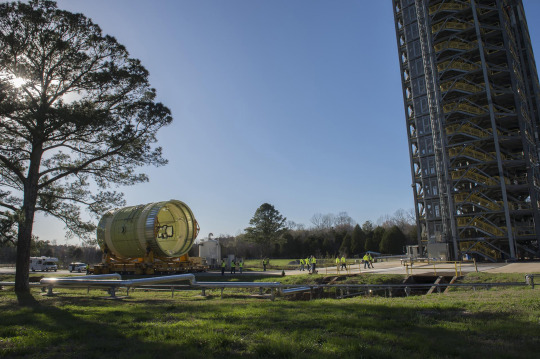
“On this day in March 2018, crews at NASA’s Marshall Space Flight Center in Huntsville, Alabama, transported the intertank structural test article off NASA’s Pegasus barge to the Load Test Annex test facility for qualification testing.” —Emmett Given, photographer, NASA’s Marshall Space Flight Center
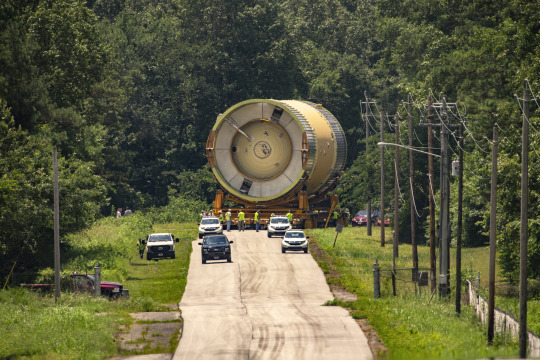
“This is the liquid oxygen tank structural test article as it was moved from the Pegasus barge to the West Test Area at our Marshall Space Flight Center on July 9, 2019. The tank, which is structurally identical to its flight version, was subsequently placed in the test stand for structural testing several days later. I remember it being a blazing hot day!” —Fred Deaton, photographer, NASA’s Marshall Space Flight Center

“The large components of the SLS rocket’s core stage can make you forget that there are many hands-on tasks required to assemble a rocket, too. During the mating of the liquid hydrogen tank to the forward section of the rocket’s 212-foot-tall core stage in May 2019, technicians fastened 360 bolts to the circumference of the rocket. Images like this remind me of all the small parts that have to be installed with care, expertise, and precision to create one huge Moon rocket. Getting in close to capture the teammates that work tirelessly to make Artemis a success is one of the best parts of my job.” —Eric Bordelon, photographer, NASA’s Michoud Assembly Facility
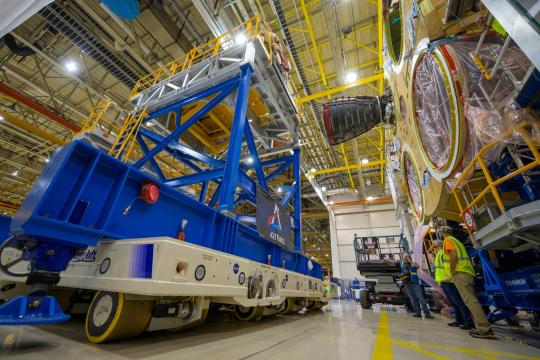
“An incredible amount of precision goes into building a rocket, including making sure that each of our SLS rocket’s four RS-25 engines is aligned and integrated into the core stage correctly. In this image from October 2019, I attempted to illustrate the teamwork and communication happening as technicians at NASA’s Michoud Assembly Facility in New Orleans do their part to help land the first woman and the first person of color on the Moon through the Artemis missions. It’s rare to see the inside of a rocket – not as much for the NASA and Boeing engineers who manufacture and assemble a rocket stage!” —Jared Lyons, photographer, NASA’s Michoud Assembly Facility

“When the fully assembled and completed core stage left the Michoud factory in January 2020, employees took a “family photo” to mark the moment. Crews transported the flight hardware to NASA’s Pegasus barge on Jan. 8 in preparation for the core stage Green Run test series at NASA’s Stennis Space Center near Bay St. Louis, Mississippi. When I look at this photo, I am reminded of all of the hard work and countless hours the Michoud team put forth to build this next-generation Moon rocket. I am honored to be part of this family and to photograph historic moments like this for the Artemis program.” —Steven Seipel, MAF multimedia team lead, NASA’s Michoud Assembly Facility

“This photo shows workers at Stennis prepare to lift the SLS core stage into the B-2 Test Stand for the SLS Green Run test series in the early morning hours of Jan. 22, 2020. I started shooting the lift operation around midnight. During a break in the action at about 5:30 a.m., I was driving my government vehicle to the SSC gas station to fuel up, when I saw the first light breaking in the East and knew it was going to be a nice sunrise. I turned around and hurried back to the test stand, sweating that I might run out of gas. Luckily, I didn’t run out and was lucky enough to catch a beautiful Mississippi sunrise in the background, too.” —Danny Nowlin, photographer, NASA’s Stennis Space Center
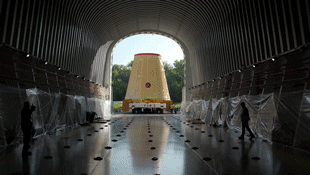
“I like the symmetry in the video as it pushes toward the launch vehicle stage adapter. Teams at NASA’s Marshall Space Flight Center in Huntsville, Alabama, loaded the cone-shaped piece of flight hardware onto our Pegasus barge in July 2020 for delivery to NASA’s Kennedy Space Center in Florida. The one-point perspective puts the launch vehicle stage adapter at the center of attention, but, if you pay attention to the edges, you can see people working. It gives a sense of scale. This was the first time I got to walk around Pegasus and meet the crew that transport the deep space rocket hardware, too.” —Sam Lott, videographer, SLS Program at Marshall Space Flight Center

“This was my first time photographing a test at our Stennis Space Center, and I wasn't sure what to expect. I have photographed big events like professional football games, but I wasn't prepared for the awesome power unleashed by the Space Launch System’s core stage and four RS-25 engines during the Green Run hot fire test. Watching the sound wave ripple across the tall grass toward us, feeling the shock wave of ignition throughout my whole body, seeing the smoke curling up into the blue sky with rainbows hanging from the plume; all of it was as unforgettable as watching a football player hoist a trophy into the air.” —Michael DeMocker, photographer, NASA’s Michoud Assembly Facility

“When our SLS Moon rocket launches the agency’s Artemis I mission to the Moon, 10 CubeSats, or small satellites, are hitching a ride inside the rocket’s Orion stage adapter (OSA). BioSentinel is one of those CubeSats. BioSentinel’s microfluidics card, designed at NASA’s Ames Research Center in California’s Silicon Valley, will be used to study the impact of interplanetary space radiation on yeast. To me, this photo is a great combination of the scientific importance of Artemis I and the human touch of more than 100 engineers and scientists who have dedicated themselves to the mission over the years.” —Dominic Hart, photographer, NASA’s Ames Research Center
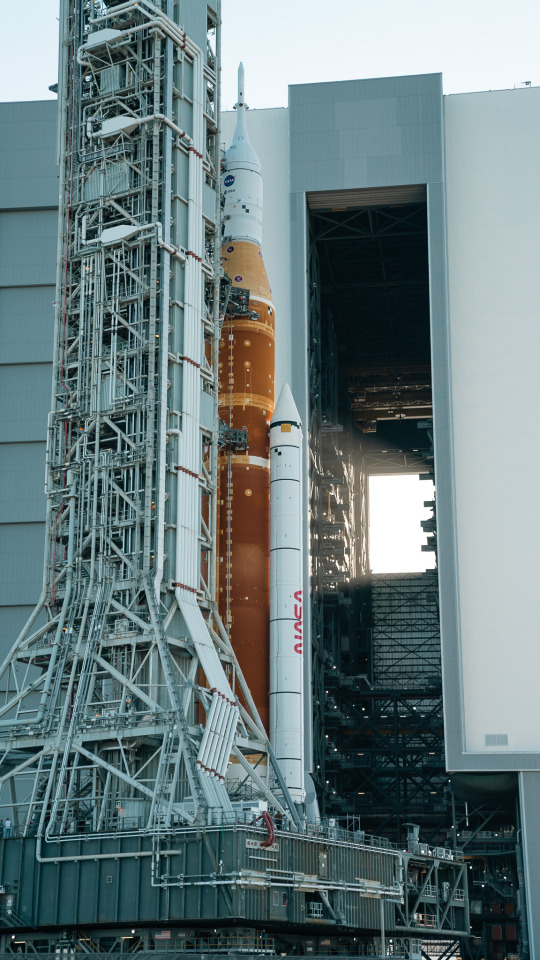
“I was in the employee viewing area at Kennedy when the integrated SLS rocket and Orion spacecraft was rolled out to the launchpad for its wet dress rehearsal in March 2022. I really like this photo because the sun is shining on Artemis I like a spotlight. The giant doors of the Vehicle Assembly Building are the red curtain that opened up the stage -- and the spotlight is striking the SLS because it’s the star of the show making its way to the launchpad. I remember thinking how cool that NASA Worm logo looked as well, so I wanted to capture that. It was so big that I had to turn my camera sideways because the lens I had wasn’t big enough to capture the whole thing.” —Brandon Hancock, videographer, SLS Program at NASA’s Marshall Space Flight Center
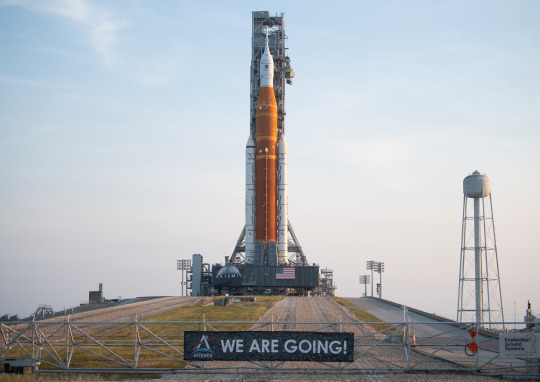
“I made this image while SLS and Orion atop the mobile launcher were nearing the end of their four-mile trek to the pad on crawler-transporter 2 ahead of launch. Small groups of employees were filtering in and out of the parking lot by the pad gate to take in the sight of the rocket’s arrival. The “We Are Going!” banner affixed to the gate in the foreground bears the handwritten names of agency employees and contractors who have worked to get the rocket and spacecraft ready for the Artemis I flight test. As we enter the final days before launch, I am proud to have made my small contribution to documenting the historic rollout for this launch to the Moon.” —Joel Kowsky, photographer, NASA Headquarters
More Photo-worthy Moments to Come!

NASA photographers will be on the ground covering the Artemis I launch. As they do, we’ll continue to share their photos on our official NASA channels.
Make sure to follow us on Tumblr for your regular dose of space!
#nasa#artemis I#moon mission#orion spacecraft#Artemis#Rocket#Space launch system#SLS#SLS Moon Rocket#Launch vehicle
2K notes
·
View notes
Text
~ Jai Krishna Ponnappan.
Find Jai on Twitter | LinkedIn | Instagram
NASA Photographers Share Their #NASAMoonSnap
We’re getting ready to launch Artemis I, the first test flight of the rocket and spacecraft that will take future astronauts to the Moon! As we prepare for the lunar voyage of the Space Launch System (SLS) rocket and Orion spacecraft launching as early as Aug. 29, 2022, we would like you to share your excitement with us. Share all types of Moon-inspired content with us with the hashtag #NASAMoonSnap, and we will choose some entries to share on our social media platforms and during the launch broadcast. Get creative! We’re looking for Moon paintings, Moon poetry, Moon pottery, Moon latte foam art — the sky is not the limit.
Since we have the full Moon coming up on Aug. 11, we wanted to share our handy dandy Moon photography guide and inspire you with some of our NASA imagery experts’ stories on capturing the Moon.

"The first rollout of the SLS rocket with the Orion spacecraft aboard was a really exciting moment to capture. I was photographing at Kennedy Space Center in an area where many of the employees that had worked on different parts of the SLS were watching. It was so great to hear some of their stories and see their pride in helping to build this amazing rocket and spacecraft. Once the mobile launcher with SLS passed the crowds to head toward the launchpad, people began to line up in their cars to leave. I decided to stick around and try to get a closer image of the Moon with SLS. It was fairly dark by the time I made this image, so there isn’t any detail in the moon, but it’s still moving to see them next to one another and know that SLS will be closer to the Moon than Earth very soon, and will one day enable humans to land on the lunar surface again!" — Aubrey Gemignani, NASA contract Photo Archivist/Photographer, NASA Headquarters
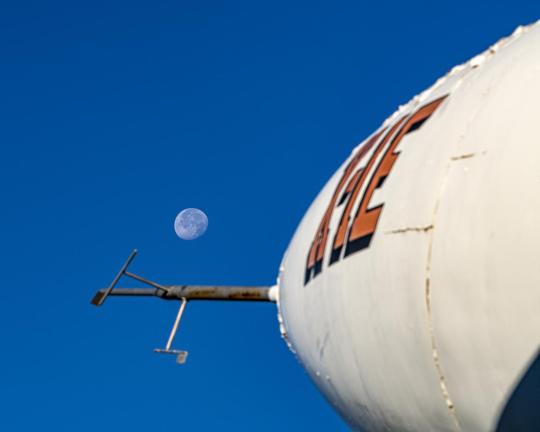
“I set up this shot when I saw the Moon was lined up perfectly with the X-1E in front of the main entrance to Armstrong Flight Research Center one morning last year. What captured my eye about this scene was that it showcased the past and the future of NASA in one image. The X-1 was a key piece of early NACA/NASA history, and it is pointing to the Moon showing us where we are going next with Artemis. I still remember walking around on my first day at NASA and seeing all the places where history was made. I was in awe as I walked these hallowed grounds. I know that there is still a great deal of history to be written here as we strive to go higher, further and faster and I’m glad that I get to be here to document it.” — Joshua Fisher, Photographer, NASA’s Armstrong Flight Research Center

“While out capturing images of the Moon, the memories of my first day as a photographer for NASA came flooding back. One of my first memories is going to the exhibits department and getting to hold an actual Moon rock sample. That day changed my perception of the Moon forever. That moment made the Moon more than just something in the sky. It became tangible and real, and my part in all of this became clear. The honor and privilege I feel everyday is overwhelming.” — Jef Janis, Still Imaging Specialist, NASA’s Glenn Research Center

“When I can, I like my Moon photos to have a sense of place. The trick is finding a shooting position and a landmark that will fit in with the Moon’s very stringent plans for rising. I went out to shoot the Sturgeon Moon, which was also a rare blue moon, last August. As I was shooting the moonrise from the riverbank in downtown New Orleans, I was lucky to have one of the city’s iconic riverboats turn a bend and head upriver to pass beneath the Moon. Happily the river was low and I was able to scramble down the high bank to reduce the vertical distance between the quickly rising moon and the slowly passing riverboat.” — Michael DeMocker, Photographer, NASA’s Michoud Assembly Facility

“I was excited to try to capture a waning crescent Moon at dawn, even though it was late February, 20 degrees Fahrenheit and 6:30 in the morning…Nonetheless, I decided to photograph on-site at Lewis Field, and ended up using my telephoto lens to really zoom in on the Moon. In a race against the sunrise and the Moon disappearing, I was able to capture a cool shot of the Moon with a couple planes making an appearance as well (The Cleveland Hopkins Airport is right next door). Although is it me, or does one of the planes look like a rocket taking off…?” — Jordan Salkin, Scientific Imaging Specialist, NASA’s Glenn Research Center

“I have worked at NASA’s Glenn Research Center since 1990 and have enjoyed every second doing what I do to support NASA’s mission. On my first day back to work onsite after 22 months of telework I saw this beautiful sunrise with the snow, the Moon, and the hangar. It felt good to be at work seeing the landscape I was so used to seeing. I had to take these pictures to share with my colleagues. ” — Jeffrey F. Abbott, Media Support Specialist, NASA’s Glenn Research Center

“In creating this Moon image, I almost felt pressured to find the ‘perfect location.’ The more that I thought about that prospect, the more I was drawn to using only natural elements, in my own environment. I wanted to find an image in my own backyard. This image was captured just as the Sun dropped below the horizon. I had a very short window of time when these colors would be possible. Two minutes earlier or later would have produced a totally different image. The almost abstract lines of a Maple tree in the earliest stages of budding seemed to be in concert with the waxing crescent Moon, both preparing for full bloom. Nature on display in its simplicity.” — Marvin Smith, Still Imaging Specialist Lead, NASA’s Glenn Research Center

“The lighthouse in Lorain, Ohio, has been photographed by amateur and professional photographers for decades, but I have never photographed it before. When I calculated that the path of the Moon was going to go over and past the lighthouse with a reflection over the water, I decided to give it a try. I encountered four other photographers on the same pier with me that early morning. They were huddled in the middle of the pier and I was at the end. I think I got the best photo.” — Quentin Schwinn, Scientific Photographer, NASA’s Glenn Research Center
Make sure to follow us on Tumblr for your regular dose of space!
#nasamoonsnap#nasa moon mission#artemis#Space Launch System#SLS#orion spacecraft#photography#moon#nasa#usa
1K notes
·
View notes
Text
Meet SunRISE: The Biggest Radio Telescope Made of Six SmallSats
youtube
The biggest radio telescope ever launched will be composed of six tiny satellites (SmallSats).

SunRISE - Sun Radio Interferometer Space Experiment.
A planned NASA project called SunRISE, or the Sun Radio Interferometer Space Experiment, will use SmallSats to monitor potentially dangerous and explosive space weather occurrences, as shown in the animation above.

These occurrences produce particle radiation that poses a risk to astronauts, space equipment, and the Earth's power and communication infrastructure.

Utah State University Space Dynamics Laboratory in Logan, which has a contract with NASA to manufacture, test, and commission all six of these SmallSats, has finished building the first of the six satellites.

The solitary antenna on each toaster-sized satellite will be used to detect radio waves coming from the Sun's atmosphere.

Each one has four telescoping antenna booms that stretch approximately 10 feet (2.5 meters) to form a "X," and they all work together to sketch out the virtual radio telescope as they circle Earth from a distance of roughly 22,000 miles (36,000 kilometers).
~ Jai Krishna Ponnappan
Find Jai on Twitter | LinkedIn | Instagram
#SunRISE#Radio Telescope#Biggest Radio Telescope#Space Telescope#SmallSats#SmallSat#Utah State University Space Dynamics Laboratory
0 notes
Text
Are Magnetars The Most Powerful Star In The Universe?

A magnetar is a kind of neutron star with the strongest magnetic fields now understood to exist in the Universe.
It is the little pink dot in the middle of this picture.
A magnetar would erase all of the information on Earth's credit cards if it were situated around 64,000 kilometers from the Moon.
A refrigerator magnet has a strength of around 100 Gauss compared to the Earth's magnetic field's value of roughly 1.

About a million billion Gauss of magnetic fields are present in magnetars.
The field of a Magnetar is roughly a trillion times stronger than the field of the Earth and about a thousand times greater than a typical neutron star.
The universe's most magnetic stars are without a doubt magnetars.
~ Jai Krishna Ponnappan
Find Jai on Twitter | LinkedIn | Instagram
#Magnetar#Neutron star#Astronomy#Space#Universe#Deep space#stars#magnetic field#Magnetars#NASA Chandra Xray telescope
4 notes
·
View notes
Text
Mind-blowing Image Of The Cartwheel Galaxy By NASA’s James Webb Telescope

A big, pink, specked galaxy with a tiny, inner oval and dusty blue space between it to the right, two smaller, similarly sized spiral galaxies to the left, all against a dark backdrop.
A huge spiral galaxy and a smaller galaxy collided at a fast pace to create the Cartwheel Galaxy, which is 500 million light-years distant in the Sculptor constellation and resembles the wheel of a wagon.
Two sensors, NIRCam and MIRI, that Ames scientists helped create, develop, and test, were used to capture Webb's most recent photograph.
New information is revealed on star formation and the galaxy's primary black hole.
This video from @NASA changes to show stars and galaxies.
youtube
A Hubble picture of the same object transitions into a Webb image.
A massive galaxy with a compact gold spiral in the middle of it appears as a brilliant blue ring in the first photograph.
Wispy light blue shimmers in a pattern like wheel spokes between the blue ring and the gold spiral. A brilliant yellow star with four diffraction spikes is to the right.
Two smaller spiral galaxies may be seen to the left, stacked one on the other.
The gold one is underneath the blue one. With the exception of a few reddish gold galaxy specks, the backdrop is black.
The huge galaxy in the second photograph resembles a wheel with spots on it.
The spokes of the wheel are intricate pink plumes with hazy blue spaces in between.
The star on the right has eight diffraction spikes and resembles a snowflake.
The upper galaxy to the left is pink, while the lower galaxy to the left is blue white.
The backdrop of Webb's picture is filled with several far-off, orange-red galaxies, and when the movie changes, it has the appearance of turning on Christmas lights.
Hubble's visible-light picture of the Cartwheel Galaxy and the most recent infrared image of the same subject from Webb.
There is good news: Webb will soon be releasing additional pictures.
However, scientists must first take the necessary time to review the data and make sure they comprehend what they are seeing.
Since science is a collaborative endeavor, you may already be aware of some first conclusions drawn from the Webb data.
NASA must wait for discoveries to be peer-reviewed, which means that experts have verified each other's work, before it can announce fresh findings.
By peering into the turmoil of the Cartwheel Galaxy, NASA's James Webb Space Telescope has discovered new information on star formation and the galaxy's main black hole.
Against a background of several other galaxies, Webb's strong infrared sight captured this fine picture of the Cartwheel and two smaller partner galaxies.
This picture offers a fresh perspective on the evolution of the Cartwheel Galaxy over the course of billions of years.
It is unusual to see the Cartwheel Galaxy, which is 500 million light-years distant in the Sculptor constellation.
This dramatic event—a high-speed collision between a big spiral galaxy and a smaller galaxy that isn't seen in this image—is what gave it the look of a wagon wheel.
The Cartwheel is one of several other, smaller occurrences that result from collisions of galactic scale between the galaxies involved.
The galaxy's structure and form were most significantly impacted by the collision.
The Cartwheel Galaxy has two rings: an eye-catching inner ring and a vibrant outer ring.
Like ripples in a pond after a stone is thrown into it, these two rings spread out from the collision's core.
This object is what astronomers refer to as a "ring galaxy," a kind of structure that is less frequent than spiral galaxies like the Milky Way.
Huge young star clusters are seen in the brightest regions of the core, which also includes an enormous quantity of hot material.
On the other side, star formation and supernovae predominate in the outer ring, which has been growing for nearly 440 million years.
This ring collides with the surrounding gas as it grows, causing star formation.
The Hubble Space Telescope and other telescopes have previously studied the Cartwheel.
Due to the quantity of dust obscuring the view, the mysterious galaxy has been wrapped in mystery, maybe literally.

Several galaxies may be seen in this picture from Webb's Mid-Infrared Instrument (MIRI), including the huge, warped Cartwheel galaxy. The 500 million light-year-distance Cartwheel Galaxy, which lies in the Sculptor constellation, is made up of an active outer ring and a brilliant inner ring. While there is a lot of star production in this outer ring, there are numerous stars and star clusters visible in the dusty region between.
Now that Webb has the capacity to detect infrared light, we can better understand the nature of the Cartwheel.
The Near-Infrared Camera (NIRCam), the main imager aboard Webb, scans the sky between 0.6 and 5 microns in the near-infrared, picking up essential light wavelengths that may show even more stars than those seen in the visible spectrum.
This is because when newborn stars are detected in infrared light, many of which are developing in the outer ring, they are less veiled by the presence of dust.
NIRCam data are tinted blue, orange, and yellow in this picture.
Numerous blue specks that make up the galaxy are either individual stars or regions of star formation.
The smooth distribution or form of the older star populations and thick dust in the core contrasts with the clumpy morphologies linked to the younger star populations outside of it, as seen by NIRCam.
But to understand the galaxy's dust in more detail, Webb's Mid-Infrared Instrument is needed (MIRI).
In this composite picture, MIRI data is highlighted in red.
It indicates areas of the Cartwheel Galaxy that are abundant in silicate dust, which is similar to much of the dust on Earth, as well as hydrocarbons and other chemical substances.
These areas come together to create a web of spiraling spokes that serve as the galaxy's backbone.
These spokes may be seen in earlier Hubble views published in 2018, but in this Webb picture, they stand out considerably more.
Webb's findings confirm that the Cartwheel is going through a very fleeting phase.
The galaxy, which before the collision was probably a typical spiral galaxy like the Milky Way, will probably continue to change.
While Webb offers a glimpse of the Cartwheel's present situation, it also sheds light on the galaxy's historical events and potential future developments.
The best space scientific observatory in the world is the James Webb Space Telescope.
In addition to looking beyond our solar system to distant planets orbiting other stars, Webb will delve into the enigmatic architecture and origins of the cosmos and our role within it.
Image credit: NASA, ESA, CSA, STScI Learn more: https://go.nasa.gov/3SdOLDo
~ Jai Krishna Ponnappan
Find Jai on Twitter | LinkedIn | Instagram
#NASA#AmesResearchCenter#Webb#JamesWebbSpaceTelescope#UnfoldTheUniverse#SpaceTelescope#Galaxy#BlackHole#stars
0 notes
Text
Studying Andromeda Galaxy Through The Lens Of Hubble

Seven years ago, the Andromeda galaxy was shown in the clearest, biggest picture yet generated by @NASAHubble, which covered a 48,000-light-year length of our galaxy's neighbor and had over 100 million stars.
We can recognize thousands of star clusters since Andromeda is 2.5 million light-years distant.
A stellar cluster is a compact collection of hundreds or thousands of stars.
Because our Milky Way galaxy and Andromeda are similar in size and form, we can learn a lot about our own galaxy by examining its sibling.
This picture has three parts.
The Andromeda galaxy's bottom left corner is seen in the first photograph(above) as a brilliant point with bands stretching in all directions.
In the upper quadrant of the picture, the light fades away, leaving mostly darkness and little patches of blue space with uncountable stars.
In the second image, light is seen fading away, with bands of purple and blue giving way to the void's utter darkness.

In the third picture, a belt of blue stars is surrounded by countless more stars.

Credit goes to R. Gendler, the PHAT team, J. Dalcanton, B.F. Williams, and L.C. Johnson (all from the University of Washington).
~ Jai Krishna Ponnappan
Find Jai on Twitter | LinkedIn | Instagram
7 notes
·
View notes
Text
UAE’s HOPE MARS MISSION CAPTURES STUNNING IMAGE.

The Hope mission of the @uaspaceagency snapped a stunning new image of Mars.
In February 2022, the spacecraft sent the raw data, which amateur image processor @jpmajor utilized to produce this picture.
Near the middle of this image is the massive Valles Marineris canyon system, and the ice fields at either pole truly stand out against the rest of the red planet.
Hope, the Mars mission of the United Arab Emirates.

United Arab Emirates orbiter Hope arrives on Mars in February 2021. To better grasp what Mars was like when its atmosphere may have supported life, Hope is researching the planet's environment.
The Arab world's first space mission is called Hope. Greater nations researching our solar system will lead to more discoveries and chances for international cooperation.
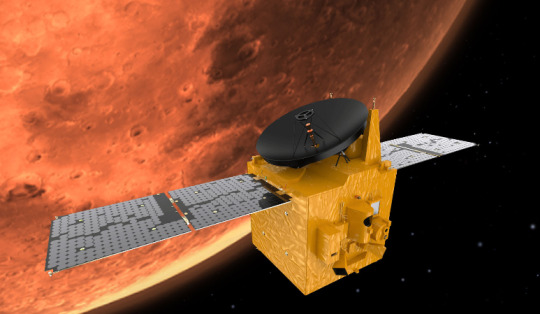
Why did Mars' atmosphere change?
Mars is a frigid, arid desert with an atmosphere 100 times thinner than Earth's that is packed with carbon dioxide. But things weren't always that way. We are aware that liquid water originally flowed across its surface, supported by a possible life-supporting atmosphere.
Then, though, something occurred. Mars' magnetic field vanished around 3 billion years ago, just as life first emerged on Earth.
The solar wind, a continuous stream of charged particles emanating from the Sun, cannot reach Earth because of our planet's magnetic field.
Without a magnetic field to shield it, the solar wind took most of Mars' atmosphere away, causing the planet to gradually change into what it is today.
These discoveries were produced by NASA's MAVEN mission, which is still on Mars.
How is Hope researching the atmosphere of Mars?
The goal is to get a thorough understanding of the Martian atmosphere and track the evolution of Mars' climate. This will help researchers understand the history of Mars and whether or not life may have ever been there. Additionally, it will clarify the causes and effects of the climatic changes that are taking place on our own planet.
Hope also highlights the significance and potential of global space exploration.
The United Arab Emirates is in charge of the expedition, and scientists and engineers from American colleges are taking part. The spacecraft was launched by Japan. Space exploration unites us all, and everyone benefits when additional countries take part and work together.
What time did Hope launch, and what time did it land on Mars?
Amidst the additional burden of the worldwide COVID-19 epidemic, Hope was introduced on July 19, 2020. In February 2021, it came.
How Hope researches the ambiance of Mars
By investigating Mars from a considerably higher orbit (22,000 by 44,000 kilometers as opposed to 4,500 by 150 kilometers), Hope will expand on MAVEN's research.
Several Mars missions, including MAVEN, have orbits that are ideal for transmitting communications between rovers on Mars' surface and Earth.
Hope will observe Mars' upper atmosphere from its vantage point in orbit, tracking the escape of hydrogen and oxygen, vestiges of Mars' wetter past.
The spacecraft will also investigate the interactions between the planet's top and lower atmospheres. Beautiful images of the earth may be captured with a high-resolution digital camera.
The main scientific mission of Hope is expected to run for two years. After then, the mission can be prolonged.
~ Jai Krishna Ponnappan
Find Jai on Twitter | LinkedIn | Instagram
TechnologistsInSync.com
#MARS#UAE Space Agency#HOPE Mars Mission#Space Exploration#MARS Orbiter#MAVEN#MAngalyaan#Arab Space Mission#Valles Marineris canyon system
1 note
·
View note
Text
More PRC Chinese Space Debris Crashes Recklessly Above The Indian Ocean
Chinese space junk was spotted burning on re-entry above the Indian Ocean land on Saturday, according to NASA.

China launched the rocket earlier this week with the mission name Wentian, according to the Aerospace Corporation, a space research facility that monitors trash reentering our atmosphere.
Uncontrolled re-entry of the 23-ton Long March 5B rocket occurred.
Flaming bits of Chinese Space Debris Rained Over The Indian Ocean.
youtube
Chinese space junk re-enters the atmosphere over the Indian Ocean Around 12:45 PM EDT on Saturday, the US Space Command reported that the Long March 5B (CZ-5B) rocket re-entered over the Indian Ocean (16:45 GMT).
Space authorities from the US and China verified that debris from a large Chinese rocket came down to Earth on Saturday over the Indian Ocean.
Around 12:45 PM EDT on Saturday, the US Space Command reported that the Long March 5B (CZ-5B) rocket re-entered over the Indian Ocean (16:45 GMT).
For further information on the reentry's technical features, such as the probable debris dispersal+ hit site, it tweeted, "We direct you to the PRC."
According to NASA, Beijing has not provided the "precise trajectory information" required to determine the potential locations of falling debris.
The US Space Command stated on Twitter on Saturday that it is still unknown what course the rocket debris may follow and pointed inquiries to the Chinese authorities.
According to a short statement that was questioned by a US official, China's spaceflight agency claimed that the 23 metric ton (25.4 tons) Long March 5B's wreckage crashed to Earth over water in the southwest Philippines.
The "great bulk" of the debris burned up during reentry.
According to the New York Times, which cited updates on the social networking site Weibo, the Chinese Manned Space Agency asserted that the majority of the debris had burnt up on re-entry over the Sulu Sea, between the island of Borneo and the Philippines.
NASA Administrator Bill Nelson was quoted as saying that "all spacefaring countries should follow recognized best practices and do their bit to provide this sort of information in advance to enable realistic projections of possible debris impact risk."
To secure the safety of humans on Earth and the responsible use of space, this is essential.
The Long March 5B, China's most powerful rocket, launched on July 24 to carry a laboratory module to the new Chinese space station being built in orbit.
This was the rocket's third trip since its first launch in 2020. In 2020, pieces of a different Chinese Long March 5B fell on the Ivory Coast, destroying a number of structures there, although no casualties were recorded.
The Chinese Embassy in Washington declined to react right away.
China said earlier this week that it will watch the debris attentively but claimed that there was no danger to anyone on the ground.
Although the news is shocking, a rocket has wildly returned to our environment before, and it won't be the last.
When pieces of a Chinese rocket crash-landed on Earth last year, everyone underneath was terrified. The Indian Ocean is where it thankfully landed, but that won't always be the case.
There is a 10% chance that a piece of space trash may kill someone on the ground within the next 10 years, according to experts who predict that more space debris will crash with Earth.
According to Michael Byers, a political science professor at the University of British Columbia, the danger is statistically low but not zero, it's growing, and it's completely preventable. So, should we use the tools at our disposal to reduce the likelihood of casualties? I believe the appropriate response is yes.
NASA would concur, having just scolded China for its improper management of space junk last year.
The government body declared in a statement last year that China's space technology did not "meet responsible requirements."
According to Johnathan McDowell, an astronomer at the Harvard-Smithsonian Center for Astrophysics, "the point is that something that huge are generally not placed in orbit without an active control mechanism."
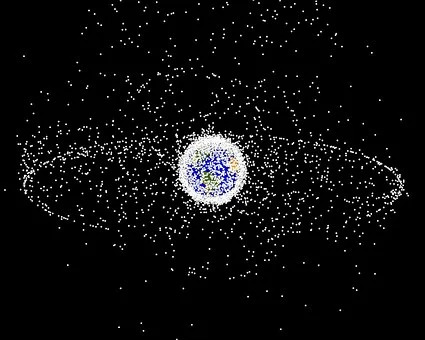
He said that typically, debris weighing more than 2.2 tons has a predetermined landing location on Earth, but this is not the case.
It "simply tumbles around in orbit and ultimately burns up due to friction with the atmosphere" since it has "no active control system, and no re-startable engine to blast it back down to Earth," he said.
In 2020, a Chinese rocket weighing close to 20 tons likewise flew over Los Angeles and Central Park before crashing into the Atlantic Ocean.
It's uncertain how much of the stuff will burn up when it falls into the sky since the US doesn't know what the rocket is comprised of and has no control over the trash. Weather is another element that affects where the rocket falls.
Even if something does crash land on land, we're not discussing a catastrophe like the destruction of a whole city here; rather, we're discussing the destruction of a structure, which is still horrible.
China needs more international pressure to essentially stop using rockets so carelessly.
~ Jai Krishna Ponnappan
Find Jai on Twitter | LinkedIn | Instagram
#Chinese Space debris#prc#chinese space junk#reckless space program#space debris#rocket design flaw#space pollution#space trash#chinese rocket
0 notes
Text
Two Enormous Asteroids The Size Of Buildings Will Fly By The Earth - NASA Asteroid Watch.
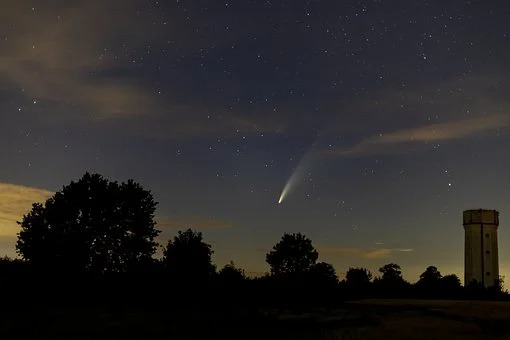
Two enormous asteroids the size of buildings will fly by the Earth while you relax this weekend, according to NASA's Asteroid Watch.
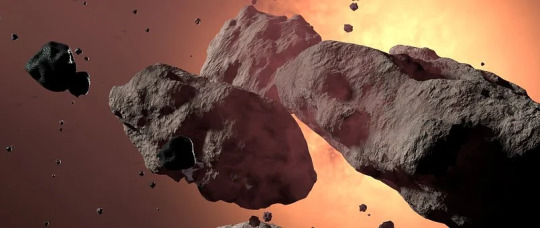
Asteroids, also referred to as the asteroid belt, are objects made of rock, dust, and metallic minerals that predominantly reside in the space between the orbits of Mars and Jupiter.

However, some asteroids deviate from this path and are beyond Neptune's orbit, while others approach the Sun more closely. These asteroids are categorized as Near-Earth Objects (NEOs) because they sometimes approach the Earth extremely closely while traveling through the Earth's orbit.

An asteroid must be within 1.3 astronomical units (AU) of Earth to be classified as a NEO, or it must be at least 460 feet (140 m) away from the Sun to qualify as a potentially dangerous object (PHO).
~ Jai Krishna Ponnappan
Find Jai on Twitter | LinkedIn | Instagram
TechnologistsInSync.com
0 notes